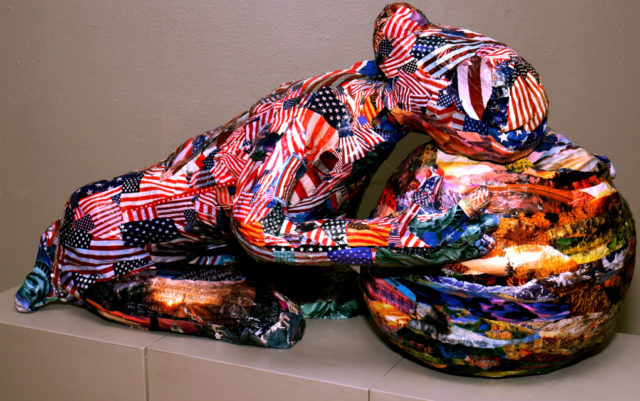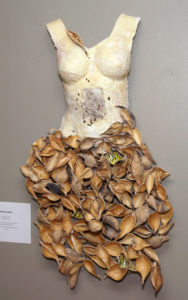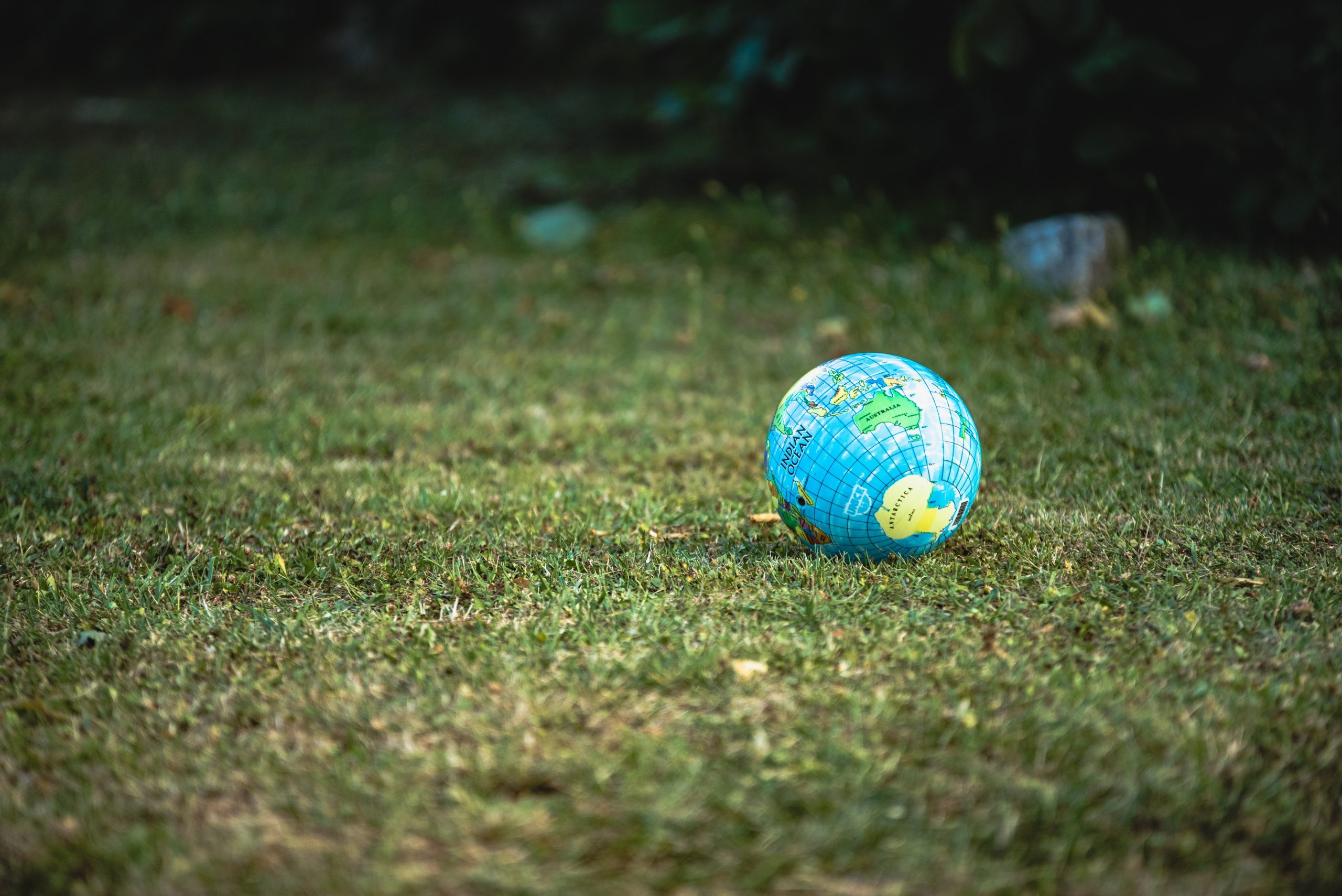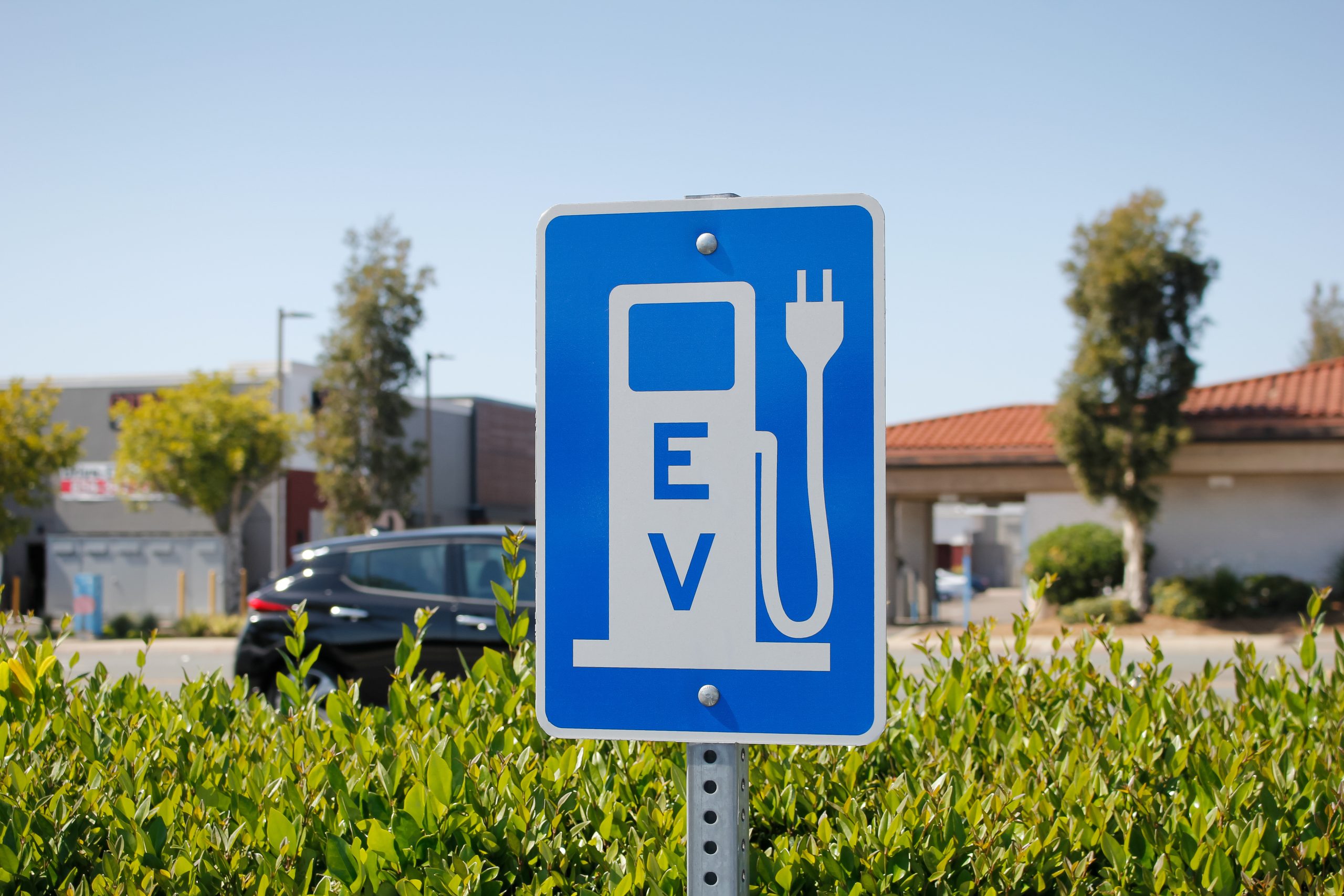
Through a window in the Arts Longmont Gallery sits a garden. Lush with a variety of plants, the space is bright and full of life. Something feels strange, yet oddly familiar about these plants. Far from a natural garden, the “flora” is actually made from 25 square meters of recycled plastic bags, bottles, pipes and other discarded material.
“It was done out of anger of how much plastic and waste I see around me,” says artist Hagar Fletcher. “I decided that I’m turning my anger into something else, an art creation.”
Fletcher’s piece “In My Beautiful Garden,” is one of the many works on display at the Arts Longmont Gallery’s annual EcoCreations show. Now in its eighth year, EcoCreations features work from local and national artists, all with one thing in common: Each piece of art is made from recycled materials and found objects. The exhibit is one of the most popular shows for the gallery, and the variety of offerings evolves each year.
Fletcher hopes her piece inspires some happiness and whimsy for the viewer. Moreso, she hopes it cultivates a deeper environmental awareness.
“It’s colorful and at the same time it exposes some questions: How much plastic we have in our daily life, how much we’re wasting, using and putting in the rubbish,” she says.

For many artists, the choice of material is directly linked to nature and conservation. Stephanie Hilvitz has spent the past decade working with the science and lore of the monarch butterfly. Her sculpture “Vessel Goddess” is made in the shape of a headless woman with a skirt created from milkweed pods. It alludes to the mythological goddess of the monarchs.
“This goddess is the source of the magical, mystical monarch migration,” Hilvitz says. “They depend on her and she depends on us [to survive] because we are doing a lot to wipe out the milkweed habitat along the migration route of the monarchs with glyphosate, Roundup Ready seeds and Big Agriculture practices.”
Milkweed plants are common throughout Boulder County, although off the monarch’s migration route. Still, Hilvitz wanted to call attention to the threat the plant, and therefore the butterfly, faces around the country. One of the missions of her work is to educate and galvanize the audience through art.

Also, by using natural materials, she avoids buying art supplies.
“We have a lot of material waste. We have a lot of access to material in the world that we don’t have to buy new,” she says. “Our world is full of stuff that ends up in landfills or clogging the environment. So if we can scour that and rescue that from landfills and create works of art that people can enjoy, that’s important.”
Found material can add another layer of meaning to the work as well. First place winner of the show Aimee Fink uses many materials most people would consider junk. For her work “Study in Resilience II,” Fink sculpted two American bison heads out of bike chains, Coors cans, horseshoes, buckles, license plates, keys, jewelry, dog tags and more.
She finds inspiration in the commonplace knick knacks she uses.
“All of those things have a person and a story embedded in them,” she says. “I didn’t just want to build something out of material, but I wanted to build something that had stories and history inherent in each of those objects.”
Created from items found around Colorado, “Study in Resilience II” invokes a spirit of place, as Fink is always mindful of the past of each object she uses.
“I find charm bracelets and think of the person who wore that, and then when I put it in the piece, it connects people who wouldn’t otherwise be connected,” she says. “The bison represents the sum of all of those parts and they become a community, and it represents the community that we live in.”

Artist Meghan Nathanson also uses her materials to bring people together. A few years ago she began using recycled wall calendars as her main medium for what she calls “sculptural collage.” Now she receives donations from around the country.
“It started to really hit me that I was keeping alive this DNA of people’s lives,” Nathanson says. “I would get calendars from 10 or 15 years before. There was one friend whose daughter’s first birthday was marked and now she’s 13. … A friend of mine pointed out it’s like taking the pieces and putting together the scraps of life into something more beautiful.”
In “Mother Nation,” a woman figure, created of mostly American flag imagery, folds herself over the globe. Nathanson took inspiration from the presidential election and the Women’s March. She wanted to create a visual representation of what she’s been feeling in these politically turbulent times.
“I wanted to invoke an American feminine presence to show that we stand for something different than what our leadership is saying we stand for,” she says. “Trying to say to the world, through my art, that this a nation of people who still cares deeply about the Earth and wants to be part of a global whole.”
The themes throughout EcoCreations vary from artist to artist. But with the materials used in each, it’s hard to forget about the precarious state of the environment.
While Fletcher channeled her frustration at the abundance of plastic into art, she’s hopeful for a day where there won’t be anymore plastic to use.
“Definitely, we’re on the right track,” she says. “But there’s still quite a way to walk.”
Which is why shows like EcoCreations are important for her.
“I’m trying to stay modest in my existence,” she says. “But I do what I can do to tell you I’m going to change the world, maybe one millimeter at a time.”



